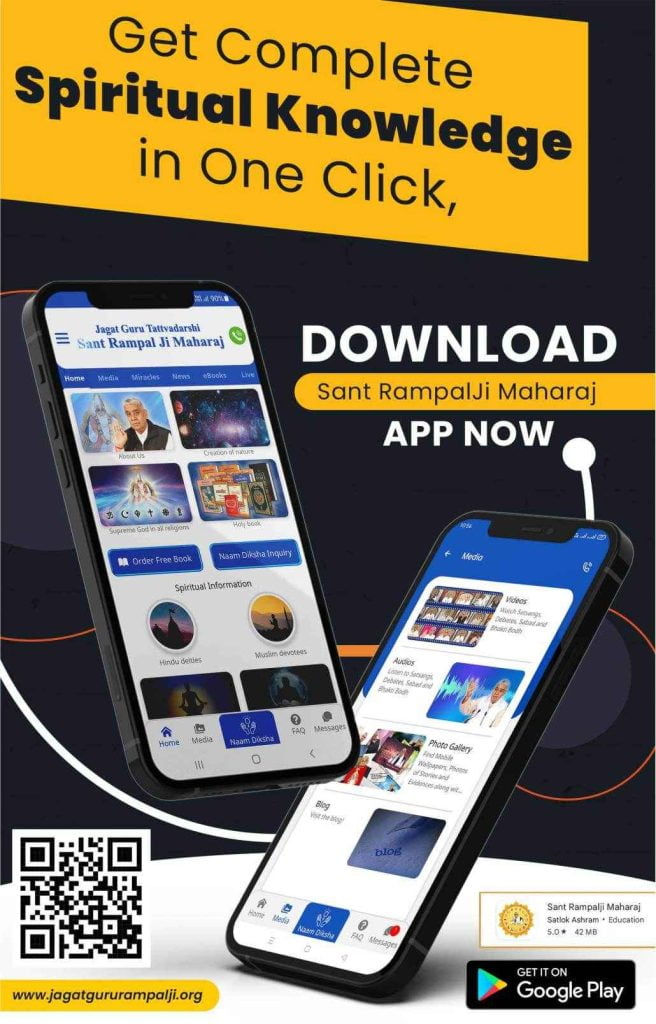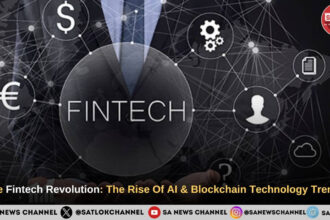Programming languages are considered as the backbone of the digital world just like a language is to communication. This article explores the unseen skeletal framework of software development—its significance, history, and the current best programming languages—as these are the tools behind every app and gadget we interact with daily. It also analyses the consequences when programming languages are used against us.
- Best Programming Languages 2025 Highlights
- What are programming languages?
- Difference Between Programming Languages and Coding Languages
- What Are Programming Languages Useful?
- A Brief History of Programming Languages
- Best Programming Languages 2025
- The Dark Side of Programming Languages
- Security Vulnerabilities and Cyber Threats
- Tools for Cybercrime
- Increasing Attack Surfaces
- Legacy Systems with Hidden Risks
- Social Engineering and Scripting Abuse
- The Programming Peril
- The Real Operating System: The Spiritual Programming Language
- Best Programming Languages FAQs
- Q1: Is Python better than C++?
- Q2: Which is the best language for programmers?
- Q3: Which is the toughest programming language?
- Connect With Us on the Following Social Media Platforms
Best Programming Languages 2025 Highlights
- According to the TIOBE Programming Community Index for May 2025, Python holds the leading position as the most popular programming language, with C++, C, Java, and C# following in second to fifth place respectively.
- Meanwhile, a 2024 Statista survey on global developer usage reveals that JavaScript is the most widely used language, with 62.3% of developers reporting its use, followed by HTML/CSS at 52.9% and Python at 51%.
Image Source: Statista
- C-Shashtri, Kojo and Julia are among those programming languages created by Indians.
- Despite its projected potential, programming languages are also used by miscreants like hackers to create ransomware, breach data and create various other security threats.
What are programming languages?
Best Programming Languages 2025: Humans speak in various languages across geographies as tools of communication, however, computers don’t understand human languages.

A programming language provides a structured way for people to give commands to a computer. For a simplified understanding:
- Computers can only process and store information using two states: on and off, which are represented numerically as 1 (on) and 0 (off). This system is called binary, or the binary number system, and it forms the most basic language of computers.
- Essentially, binary is a number system based on just 1 and 0, wherein letters, numbers, images, instructions, everything is represented using combinations of just 1s and 0s.
- A computer’s hardware is made of circuits and transistors, and it recognises these 1s and 0s as electrical signals.
- The number 1 typically represents the presence of an electrical signal, while 0 indicates its absence.
Therefore, when we write a code in any programming language (like Python or Java), it eventually gets translated down into binary code by a compiler or interpreter. This binary system is the fundamental language that a computer’s hardware is designed to understand and process.
Also Read: The Ultimate Guide to Best Coding Bootcamps in 2025
To conclude, humans write in high-level programming languages that only computers ‘understand’ in binary.
Difference Between Programming Languages and Coding Languages
Though often used interchangeably, programming languages and coding languages aren’t exactly the same. A programming language, such as Python, Java, or C++, is a complete toolset used to build software, control systems and manage logic and data flow. They allow developers to build applications, manage memory, and control hardware behaviour.

In contrast, coding languages is a broader term that can also include markup or scripting languages like HTML, CSS or SQL. These are used for specific tasks such as structuring web pages, styling content or querying databases, but they don’t have the full capabilities needed to develop complete applications.
Simply put, all programming languages involve coding, but not all coding languages are full programming languages.
What Are Programming Languages Useful?
As the only means to communicate with a computer, programming languages have several uses, namely:
- Communication with computers: As computers cannot think on their own, the programming languages help us deliver a precise set of instructions to computers in the form of a code they understand to execute various tasks.
- They help create software applications.
- They are used to develop websites and mobile sites.
- Problem Solving: When there are technical glitches in a computing system, programming languages allow developers to solve them.
- Automation of repetitive tasks: Helpful in automating time consuming tasks like sending automated emails or even sorting data.
- Innovation: From Artificial Intelligence (AI) to Virtual Reality (VR), all these breakthroughs rely on programming languages.
- Controlling hardware and robots such as drones, 3D printers and IoT devices.
Best Programming Languages 2025: Today, programming is a part of multiple industries like healthcare, finance, education, agriculture, and even construction.
A Brief History of Programming Languages
The origins of programming languages can be traced to the 1800s, when Ada Lovelace, widely considered the first computer programmer, devised an algorithm intended for Charles Babbage’s Analytical Engine. Her work marked a groundbreaking moment in the evolution of computational thinking.

The first actual programming languages started to appear in the mid-20th century, with a timeline as follows:
- 1940s–1950s: Machine code and Assembly languages were used to directly communicate with hardware.
- 1957: FORTRAN (Formula Translation) became one of the first high-level languages, designed for scientific and engineering calculations.
- 1960s: COBOL emerged for business applications, while LISP was developed for artificial intelligence. In the 1960s, a language called BASIC was introduced to simplify programming, making it more accessible to beginners and non-experts.
- 1970s–1980s: The rise of languages SQL, C, Pascal, Objective C and later C++, allowed more complex systems to be built. These languages were the stepping stones for the current complex programming languages.
- 1990s: The internet age saw the birth of HTML, Java, JavaScript, Ruby, Visual Basic and PHP.
- 2000s–present: Modern languages like C#, Python, Kotlin, Swift by Apple, and Go by Google are the current programming languages.
Each new generation of programming languages was designed to solve specific challenges and make development easier and more powerful. This technological space continues to evolve.
Best Programming Languages 2025
Best Programming Languages 2025: While there are hundreds of programming languages, only a few have stood the test of time or gained massive popularity due to their utility, ease of use, and community support. Here are some of the best programming languages in use today:
Python
Python is widely recognised as a user-friendly language, making it ideal for those new to programming. Known for its simple syntax and wide range of applications, it’s often the first choice for new programmers.

Uses: AI, Web development, data science, machine learning, automation and software development. It is most preferred in constructing complex neural networks and also in implementation of natural language processing.
Advantages:
- Easy to read and write.
- Large community and vast library support.
- Great for rapid development and prototyping.
- Widely used in data science and AI.
- Widely preferred in web development and data-heavy applications.
Disadvantages:
- Slower execution compared to compiled languages.
- Not ideal for mobile app development.
JavaScript
JavaScript is considered as the backbone of the web. Nearly every website uses this programming language to create interactive elements like buttons, animations, and user interfaces.

Uses: Web development (frontend and backend), app development, robotics and IoT
Advantages:
- Runs in all major web browsers.
- Powerful for creating interactive user interfaces.
- Supports both frontend and backend development (Node.js).
Disadvantages:
- Can become complex to manage in large-scale projects.
- Browser compatibility issues.
Java
Java is a general-purpose, object-oriented programming language known for its portability across platforms and philosophy ‘Write Once, Run Anywhere’.
Uses: Enterprise software, Android app development, desktop apps and large systems. Also helpful in analysing and processing huge datasets.
Advantages:
- Strong performance and scalability.
- Excellent for large, complex applications.
- Huge community and support.
Disadvantages:
- Verbose syntax (more lines of code).
- Slower startup times.
C++
C++ is a high-performance programming language that builds on C. It’s widely used for system/software development and fintech.

Uses: Operating systems, embedded systems, smart home devices and performance-critical applications.
Advantages:
- It functions close to the machine’s hardware, allowing programmers fine-tuned access to manage memory and optimise system operations.
- Very fast and efficient.
- Mature and stable.
Disadvantages:
- Steep learning curve.
- Manual memory management can lead to errors.
C# (C-Sharp)
Originally created by Microsoft for Windows-based software, C# has evolved into a robust language suitable for cross-platform development.

Uses: Desktop software, web services, cloud services and enterprise apps.
Advantages:
- Great for Windows and .NET development.
- Object-oriented and type-safe.
- Strong integration with Microsoft tools.
Disadvantages:
- Limited cross-platform capabilities (improving with .NET Core).
TypeScript
TypeScript is a powerful superset of JavaScript developed by Microsoft. It adds static typing to JavaScript, allowing developers to catch errors early during development. TypeScript has gained popularity for its ability to make large-scale applications more manageable and maintainable. This language is considered an excellent starting point for individuals beginning their coding journey.
Uses: Frontend development, enterprise-grade website applications, upkeep of complex database of codes and also in developing large-scale websites
Advantages:
- By enforcing static types, the language helps catch errors early and enhances the overall stability of the code.
- Enhanced tooling support, such as autocompletion and refactoring, improves developer productivity.
- Works seamlessly with existing JavaScript code, making migration easy.
- Excellent support in modern frameworks like Angular, React and Vue.
Disadvantages:
- Slightly steeper learning curve for beginners unfamiliar with types.
- Before it can execute in a browser or JavaScript-based setting, TypeScript needs to be converted into standard JavaScript through a compilation process.
- Projects can become complex if not well-structured due to added layers of abstraction.
SQL (Structured Query Language)
SQL is a domain-specific programming language used for managing and querying relational databases. As a result, it stands out as a highly recommended language for learners entering the programming world.

Uses: It has been a cornerstone of data-driven applications for decades and remains crucial in business intelligence, data analysis and backend development.
Advantages:
- Efficient querying and manipulation of large datasets.
- Universally supported across relational database systems like MySQL, PostgreSQL, Oracle and SQL Server.
- Declarative syntax makes it easier to express what data is needed without specifying how to get it.
Disadvantages:
- Limited to relational database structures and less suited for modern NoSQL needs.
- It isn’t intended for building full-scale applications or handling advanced programming tasks.
- Can become complex and hard to manage when dealing with large joins or nested queries.
Go (Golang)
Developed by Google, Go is known for its speed, simplicity, and performance in building scalable network and web applications. It is similar to C and C++ in functions albeit its simpler syntax.
Uses: Common uses include cloud infrastructure, backend services, automated data workflows, and DevOps development.
Advantages:
- Fast and efficient.
- Easy to learn and maintain.
- Great concurrency support.
Disadvantages:
- Limited library support for some advanced tasks.
- Less expressive compared to languages like Python or Ruby.
Swift
Swift is the main language developed by Apple for building applications on its ecosystem, including iOS, macOS, watchOS, and tvOS.
Uses: Mobile apps for Apple devices.
Advantages:
- Modern, clean syntax.
- Fast and secure.
- Backed by Apple.
Disadvantages:
- Only useful within the Apple ecosystem.
- Newer language, less mature than others.
The Dark Side of Programming Languages
Programming languages power the modern world, from apps and websites to financial systems and medical devices. However, beneath their advantages is a lesser-known and often ignored yet dangerous downside. From security flaws to ethical concerns, programming languages are not just tools for creation. They can also become gateways to damage when misused or poorly managed.

Security Vulnerabilities and Cyber Threats
One of the most serious dangers lies in the security flaws inherent in or caused by programming languages.
- C and C++ allow programmers to work closely with system memory, making it possible to manage data storage directly.
- They offer flexibility, but also expose systems to critical vulnerabilities such as buffer overflows, code injection and pointer manipulation.
- Hackers exploit these weaknesses to breach systems, steal data, or disrupt services.
- Even languages considered high-level, such as JavaScript and Python are not spared and can still be affected.
- A single poorly written line of code or outdated library can become a backdoor for cybercriminals.
- Examples: Indian Bank data breach, Big Basket data leak, Dunzo data breach, etc.
With the rise of open-source ecosystems, malicious agents have even published compromised packages disguised as useful tools, putting entire organisations at risk.
Tools for Cybercrime
Ironically, the same programming languages used to secure systems are also used to break them. Languages like Python, JavaScript, and Bash are widely used in hacking, malware development, phishing scripts and ransomware creation. Their flexibility and powerful libraries make them ideal for automating attacks and exploiting vulnerabilities. For instance:
- Python is commonly used to write password crackers or network scanning tools.
- JavaScript can be used in browser-based attacks like cross-site scripting (XSS).
- Shell scripting is used in deploying automated bots or command-and-control malware.
- Examples: Ransomware attacks in Haldiram and Tata Technologies.
Increasing Attack Surfaces
As more industries adopt IoT (Internet of Things) and connected devices, programming languages now power billions of small, often insecure devices.
- These include everything from smart fridges to medical equipment.
- Many are written in lightweight or embedded languages with minimal security protections.
- This expands the global attack surface and makes critical systems vulnerable to remote exploitation.
Legacy Systems with Hidden Risks
Many old systems like government databases or banking infrastructure still run on legacy programming languages such as COBOL or Fortran. These systems often lack modern security measures and the dwindling number of experts who understand them means they are rarely updated. Consequently, these systems are particularly vulnerable to exploitation by cybercriminals.
Social Engineering and Scripting Abuse
Programming languages can be used to automate phishing attacks, send fake emails or manipulate data to deceive users. Scripts written in PowerShell, Python or PHP can be embedded into fake websites or malicious downloads, tricking users into giving away credentials or unknowingly installing malware.
The Programming Peril
From vulnerabilities in code to the use of programming languages in cybercrime, we must not overlook the darker realities. Technology has always been the double-edged sword where the tools we build become threats in disguise ultimately. But the bigger, and a far more dangerous threat is much deeper than just cybercrime.
The Real Operating System: The Spiritual Programming Language
To understand how we have been played not just in this, but in innumerable lifetimes till date, it is imperative to understand the following analogy between programming languages and computers, using the metaphor of the cuckoo and her offspring, as revealed by Jagatguru Tatvdarshi Sant Rampal Ji Maharaj
Behind every app, website or device is a ‘call’ in the form of code, for example Python’s indentation, Java’s class definitions or JavaScript’s event handlers. A machine ‘listens’ only to the precise syntax and semantics it recognises, and any stray character or misplaced bracket is ignored or rejected. Computers obey only the exact instructions given in the language they understand.
Similarly, Sant Rampal Ji Maharaj reveals the characteristic behaviour of the cuckoo’s offspring in the most path-breathing book ‘Way of Living’. A cuckoo instinctively lays her eggs in a crow’s nest and waits patiently for her chicks to grow. Once grown, she calls out ‘kooh-kooh’ – a distinct sound known by the cuckoo chicks from their heart.
Attracted by their mother’s distinct call, the cuckoo’s offspring fly straight toward her, even though they’ve been brought up by a crow. By contrast, the crow’s babies never respond to the cuckoo’s call. Their nature simply isn’t tuned to it.
Sant Rampal Ji Maharaj decodes the spiritual message embedded in this parable. God-loving souls with cuckoo-like hearts are drawn irresistibly to the true Tatvdarshi Sant’s teachings, while others remain deaf to that same call. In our technological pursuits, we focus on mastering the logical ‘languages’ of computers. However, the most profound reality, our Creator’s voice, is not encoded in bytes or binaries but in the subtle language of love, compassion and divine guidance. If we fail to attune our hearts to that call, we remain like crows, oblivious to the life-changing spiritual knowledge being offered to us. Kabir Saheb has stated in His divine verses:
Chaaron yugon mein hum pukaaraen, kook kahya hum hel re |
Heere maanik moti barsein, ye jag chugta dhel re ||
Just as a developer debugs code to reveal the logic hidden beneath errors, a Tatvdarshi Sant ‘debugs’ our consciousness of selfishness and ignorance through His impeccable spiritual knowledge, and delivers the soul-awakening message of our Real Creator – Supreme God Kabir.
Understanding programming languages may offer us control over machines and digital tools, but can they deliver the soul from the cycle of birth and death? The real purpose of human life is to recognise the Supreme Creator, God Kabir, and walk the path of true worship. But many souls, like the crow in the parable, live their entire lives unaware of the true call to salvation. They get entangled in temporary pleasures, rituals or false worship that has no basis in the holy scriptures.
Sant Rampal Ji Maharaj explains to us that without understanding the correct method of worship as prescribed in the holy Vedas, holy Bhagavad Gita, holy Quran, holy Bible and other holy texts, the soul remains caught in misery, continually cycling through the 8.4 million forms of life
Supreme God Kabir descends in every age to give this true knowledge. Today, He has manifested as Sant Rampal Ji Maharaj, as the Tatvdarshi Sant to decode the divine ‘language’ hidden in scriptures that the world has misunderstood for centuries. By accepting His guidance and taking Naam Diksha according to scripture-based worship, a soul can return to its true home – Satlok, the eternal abode beyond birth, death and suffering.
To experience the life-changing knowledge offered by Sant Rampal Ji Maharaj and discover the correct way to eternal salvation, visit:
- Website: www.jagatgururampalji.org
- YouTube: Sant Rampal Ji Maharaj
- Facebook page: Spiritual Leader Saint Rampal Ji
- X Handle: @SaintRampalJiM
Best Programming Languages FAQs
Q1: Is Python better than C++?
Answer: It totally depends on the purpose of use and project.
Q2: Which is the best language for programmers?
Answer: The article above provides a detailed overview. Besides, it also depends on the choice of programming career field.
Q3: Which is the toughest programming language?
Answer: Generally, C++ is considered as one among the toughest programming languages.









